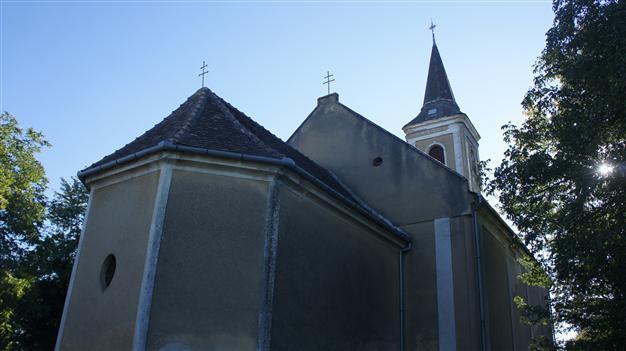Historians redouble efforts in industrious search of Suleiman the Magnificent’s shrine
SZIGETVAR, Hungary – Hürriyet / Emre Kızılkaya

Some historians assume that the Szuz Maria Church Szigetvar was built on the location of the shrine, which was destroyed by Austro-Hungarians 123 years after it was built in 1566. AA photo
Hungarian scientists have launched a fresh expedition to find the Ottoman Sultan Suleiman the Magnificent’s heart and internal organs, believed to be buried in a shrine on the top of a hill near Szigetvar, Hungary, after he died during the famous siege of the town’s fortress in 1566.Some historians assume that the shrine, which was destroyed in 1692 after Habsburgs re-captured the town, was located under the Szuz Maria (Saint Marie) Church at Turbek Hill, three kilometers northeast of the fortress of Szigetvar.
There is not enough material evidence that links the site to Suleiman. Furthermore, Hungarian experts told daily Hürriyet that no traces of the shrine have been found under the grounds of the church during the latest excavations.
Hungarians are now considering a new hypothesis according to which the shrine might have been built in the middle of a small village recently discovered by archeologists.
“The lost Ottoman village” is presumed to be at the vineyards of Zsibót, which lies two kilometers northeast of Turbek Hill, just under the surface of the earth.
“We have recreated the geography of that time through computer models. Last April, we incidentally found Ottoman artefacts in a vineyard. So we have concentrated the excavations in that area,” Dr. Norbert Pap, the project leader from Pecs University, told Hürriyet.
According to the “highly unusual” findings, the settlement shows an urban image. It was of considerable size, surrounded by a three-to-four-meter deep ditch, which served security purposes. The foundations of houses, Balkan and Turkish ceramics, traces of luxury goods and silver coins have been found in an orchard.
“Although we have not found the foundations of the shrine, there are enough evidence telling us that it could be there. Because next to the shrine there were houses, a mosque, a lodge used by mevlevi dervishes and a barracks,” Dr. Pap added.
The early findings from the latest excavations correspond with the lost Ottoman village which was formed around Suleiman’s tent and –consequently- his shrine.
“We are now certain that the shrine is not located in the church. Now we will obtain the required permits and excavate nearby the vineyard houses around Zsibót. We think it’s possible to find the shrine there by 2016, the 450th anniversary of Suleiman's death,” Hungarian archeologist Erica Hancz told Hürriyet.
Turkish experts, however, are skeptical. Many of them insisted during the symposium in Szigetvar on Sept. 20 that the church and the area around it should be excavated more throughly, although nothing could be found there since the 1970s.
A Turkish historian pointed out to Hürriyet that the vicinity of the church suffered repeated flooding over the years. “A lot of research is needed to come to the conclusion that the shrine was not under the Church’s grounds. The alluvial deposits need to be cleaned first and the foundations of the shrine should then be sought,” he said.
Ottoman Arts expert Fatih Elcil of Istanbul University, the only Turkish member of the Hungarian team, is also cautious. “It is true that we did not find any traces of the shrine in the church. But at this stage, I can’t say that the shrine is not there. For me to be able to make such a claim, the shrine's exact location needs to be located first,” Elcil told Hürriyet. “It could have been built at the site where church is, with all its traces simply swept away,” he added.
The scientific debate around the lost shrine in Szigetvar is heated after the latest findings. Meanwhile, Hungarian-Turkish relations, as well as the cooperation between institutions in two countries, improve, partly thanks to the heart of Suleiman.
















